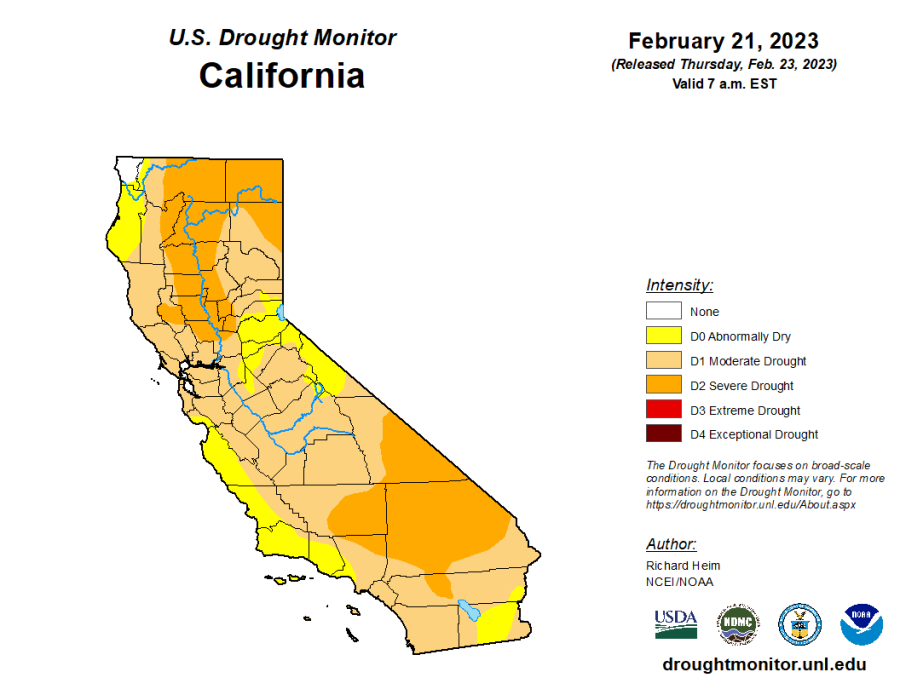Despite a barrage of storms that have drenched California with heavy rainfall and dumped feet upon feet of snow in the mountains, experts say the Golden State is still very much in a drought.
Southern California was hit with historic rain showers and snow as a recent winter storm moved through the region. In its wake, residents have battled snow-packed mountain roads, the threat of mudslides, and trees toppling over in neighborhoods.
Even though this winter’s storms have brought much-needed moisture to the state, it hasn’t fully eradicated the yearslong drought that has plagued California, experts tell KTLA.
“While winter storms have helped the snowpack and reservoirs, groundwater basins are much slower to recover. Many rural areas are still experiencing water supply challenges, especially communities that rely on groundwater supplies which have been depleted due to prolonged drought,” Jeanine Jones, the interstate resources manager at the California Department of Water Resources, told KTLA. “It would take more than a single wet year for groundwater levels to substantially improve statewide.”
But there is plenty of good news.
The wet and snowy winter season has led to an above-average snowpack in the Sierra Nevada mountain range, which provides roughly a third of the state’s water supply.
As of Monday, the state’s snow water equivalent was 181% of normal for Feb. 27 and 156% of the full season’s average, according to the California Department of Water Resources.
Snow water equivalent is a hydrology term for water depth if the snow were liquid.
Even though California isn’t entirely out of the drought, conditions in many regions have improved significantly. Los Angeles, Orange and San Diego counties are now considered to be in a “moderate drought,” according to the U.S. Drought Monitor.
In November 2022, Los Angeles County was in an “extreme drought.” Drought conditions in the Central Valley have moved from an “exceptional drought” to a “moderate drought” overall.
An “exceptional drought” category is the worst classification.























